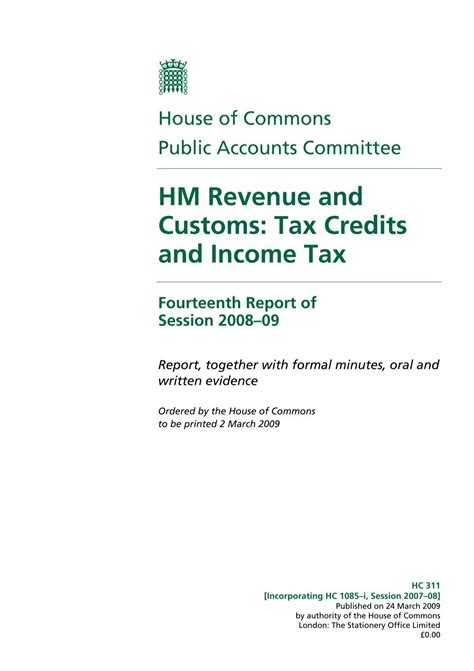Unlocking Savings: Everything You Need to Know About HM Revenue Tax Rebates
When it comes to managing your finances, one area that often goes overlooked is tax rebates. Many individuals and businesses may be eligible for tax rebates through HM Revenue and Customs (HMRC) but are unaware of how to claim them. This article aims to provide a comprehensive guide to HM Revenue tax rebates, exploring what they are, who is eligible, how to apply, and tips to maximize your savings.
Understanding HM Revenue Tax Rebates
Tax rebates are essentially refunds on the tax overpaid to HMRC. This can occur in various circumstances, including but not limited to, overpaid Income Tax, Corporation Tax for companies, or National Insurance contributions. A rebate can help individuals regain the money they’ve unnecessarily paid and improve their overall financial situation.
Who is Eligible for Tax Rebates?
Eligibility for tax rebates can vary based on several factors:
- Employees: If you are an employee and have paid too much Income Tax through your pay-as-you-earn (PAYE) deductions, you may be eligible for a tax rebate.
- Self-Employed: Individuals who are self-employed may also qualify for rebates, particularly if they have overpaid their tax based on estimated earnings.
- Students: Full-time students who have worked part-time may be able to reclaim tax if their income was low enough to fall below the tax threshold.
- Zeropay Workers: If you’ve had a period of unemployment and had tax deducted, you may be able to claim back tax for that period.
- Special Circumstances: There are also specific situations such as tax code errors or claims related to specific expenses (e.g., uniforms, tools) that could allow individuals to claim rebates.
How to Apply for HM Revenue Tax Rebates
The application process for HM Revenue tax rebates can be straightforward if you follow these steps:
- Gather Necessary Documentation: Make sure you have your P60s, P45s, payslips, and any other relevant documents ready. These documents will support your claim and clarify your earnings and taxes paid.
- Check Your Tax Code: Your tax code determines how much tax you pay. If it’s incorrect, you may have paid too much tax, making you eligible for a rebate. You can check this with HMRC.
- Claim Online: The simplest way to claim a tax rebate is through the HMRC website. Log in to your personal tax account and follow the prompts to submit your claim.
- Paper Form Submission: If you prefer to apply via paper, you can fill out a tax refund form (P50) and send it to HMRC by post.
- Follow Up: After submitting your claim, keep track of its status. It may take several weeks for HMRC to process your application.
Maximizing Your Tax Rebate Savings
To ensure you’re getting the maximum rebate possible, keep these tips in mind:
- Keep Accurate Records: Maintain organized records of your income, expenses, and tax payments throughout the financial year to support any claims.
- Review Your Expenses: If you incur any work-related expenses that have not been reimbursed, you may need to claim these as allowable expenses to increase your tax rebate.
- Stay Updated: Tax regulations can change. Keep abreast of any changes in tax laws that might affect your eligibility or the rebate amount.
- Seek Professional Advice: If you’re unsure, consulting tax professionals or accountants may help clarify your situation and improve your chances of receiving a rebate.
Common Mistakes to Avoid
While seeking a tax rebate, it’s easy to make mistakes that can delay or jeopardize your claim. Here are some common pitfalls to avoid:
- Incorrect Information: Make sure all personal and financial information is accurate on your claim, including your National Insurance number and tax codes.
- Missed Deadlines: It’s crucial to submit your claims within the specified time frames. Delays can result in your claim being denied or reduced.
- Neglecting Transitional Periods: If you switch jobs, ensure that your new employer provides the correct tax documentation, and don’t forget to review any existing overpayments from your previous job.
Conclusion
HM Revenue tax rebates can unlock significant savings for individuals and businesses alike, but claims require attention to detail and organization. Understanding your eligibility and the application process is the first step towards reclaiming overpaid taxes. Moreover, maintaining accurate records and seeking professional advice can further enhance your financial standing by ensuring you receive the maximum rebate possible. Don’t overlook the opportunity to use tax rebates to improve your financial health. Every penny counts!
FAQs
1. How long does it take to get my tax rebate?
The processing time varies, but it generally takes about 4 to 8 weeks. During peak seasons, it might take a bit longer.
2. Can I claim a tax rebate for previous tax years?
Yes, you can claim rebates for up to four tax years prior to the current tax year.
3. Do I need to pay tax on my tax rebate?
No, tax rebates themselves are not taxable, as they are simply a refund of money you already overpaid.
4. What happens if I’m denied my tax rebate?
If your claim is denied, you will receive an explanation. You may have the right to appeal the decision. Consult the HMRC for details.
5. Is there a fee for claiming my tax rebate?
Applying for a tax rebate through HMRC is free if you do it yourself. However, some third-party companies may charge a fee to assist you with the process.
Download Hm Revenue Tax Rebate
